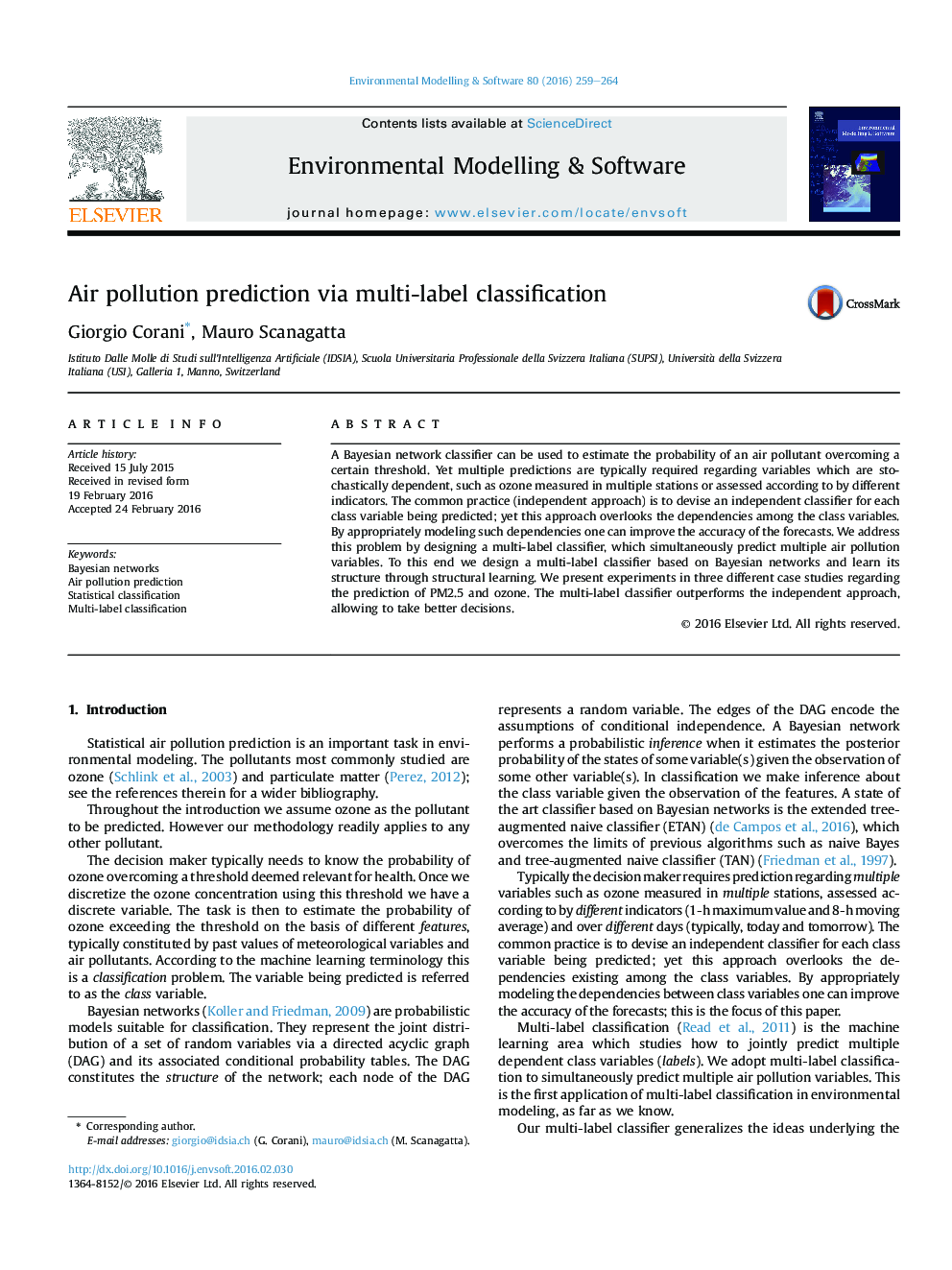| Article ID | Journal | Published Year | Pages | File Type |
|---|---|---|---|---|
| 6962536 | Environmental Modelling & Software | 2016 | 6 Pages |
Abstract
A Bayesian network classifier can be used to estimate the probability of an air pollutant overcoming a certain threshold. Yet multiple predictions are typically required regarding variables which are stochastically dependent, such as ozone measured in multiple stations or assessed according to by different indicators. The common practice (independent approach) is to devise an independent classifier for each class variable being predicted; yet this approach overlooks the dependencies among the class variables. By appropriately modeling such dependencies one can improve the accuracy of the forecasts. We address this problem by designing a multi-label classifier, which simultaneously predict multiple air pollution variables. To this end we design a multi-label classifier based on Bayesian networks and learn its structure through structural learning. We present experiments in three different case studies regarding the prediction of PM2.5 and ozone. The multi-label classifier outperforms the independent approach, allowing to take better decisions.
Keywords
Related Topics
Physical Sciences and Engineering
Computer Science
Software
Authors
Giorgio Corani, Mauro Scanagatta,
